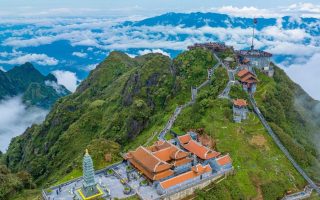iwillnotbebroken.org – Denali, formerly known as Mount McKinley, is the highest peak in North America, soaring to an elevation of 20,310 feet (6,190 meters) above sea level. This majestic mountain is located in the Alaska Range, within the Denali National Park and Preserve in the U.S. state of Alaska. Denali is a symbol of wilderness and natural beauty, attracting adventurers, scientists, and nature enthusiasts from around the world.
Geographical Significance
Denali is the centerpiece of the Alaska Range, a chain of mountains that stretches for hundreds of miles across the state. The mountain’s massive size and prominent position make it a dominant feature of the Alaskan landscape. Denali’s summit offers panoramic views of the surrounding peaks and valleys, providing a unique perspective on the vastness and diversity of the Alaskan wilderness.
Historical Overview
Denali has been known to the Indigenous peoples of Alaska for thousands of years, who have long revered the mountain as a sacred site. The name “Denali” means “the high one” or “great one” in the Koyukon Athabascan language. It wasn’t until the late 19th century that European explorers began to take an interest in the mountain. In 1896, a gold prospector named William Dickey proposed naming the peak “Mount McKinley” in honor of William McKinley, the 25th President of the United States. This name was officially adopted by the U.S. Board on Geographic Names in 1897.
However, in 1975, the Alaska Board of Geographic Names changed the mountain’s official name to Denali, reflecting its historical and cultural significance to the Indigenous peoples of Alaska. The federal government followed suit in 2015, officially recognizing the name Denali for the mountain.
Climbing Denali
Climbing Denali is a challenging and rewarding experience that requires a high level of mountaineering skill, physical fitness, and preparation. The most common route to the summit is the West Buttress Route, which is considered the safest and most accessible path. Climbers must navigate through various types of terrain, including glaciers, ice fields, and rock ridges.
The climbing season for Denali typically runs from May to July, when the weather is most stable and the days are longer. However, even during the best conditions, the mountain’s high altitude and unpredictable weather can pose significant challenges. Climbers must be prepared for extreme cold, high winds, and potential avalanches.
Cultural and Environmental Impact
Denali holds deep cultural significance for the Indigenous peoples of Alaska, who have a long history of living in harmony with the land. The mountain is considered a sacred site, and traditional practices and beliefs are an integral part of the region’s cultural heritage.
As with other high-altitude peaks, Denali faces environmental challenges due to increasing tourism and climbing expeditions. Efforts are being made to minimize the impact of human activity on the mountain and its surroundings, including waste management and the preservation of the delicate alpine ecosystem.
Conclusion
Denali stands as a testament to the beauty and majesty of the Alaskan wilderness. Its towering presence and challenging terrain make it a sought-after destination for climbers and nature enthusiasts. Whether viewed from afar or experienced up close, Denali continues to inspire awe and respect for the natural world’s wonders. As we continue to explore and appreciate these high peaks, it is crucial to do so responsibly, ensuring that future generations can also marvel at the crown of North America.



